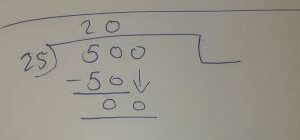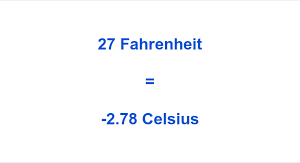Welcome halazia meaning to our blog post on halazia! Have you ever noticed a small bump or swelling on your eyelid? Chances are, it could be a halazia. But what exactly is a halazia and what causes them? Don’t worry, we’ve got you covered. In this article, we’ll explore the meaning of halazia, discuss their causes and symptoms, delve into treatment options, share tips for prevention, debunk some common myths surrounding halazia, and provide you with all the information you need to know about these pesky eye conditions. So grab your reading glasses and let’s dive right in!
What Causes Halazia and How to Identify Them?
Halazia, also known as chalazion, are small, painless bumps that form on the eyelids. But what causes these annoying growths and how can you identify them?
One common cause of halazia is a blockage in the meibomian glands. These glands produce an oily substance that helps to lubricate the eyes. When they become blocked, it leads to inflammation and the formation of a cyst-like bump.
Identifying a halazion is fairly straightforward. You may notice a small lump on your eyelid that feels firm to the touch. It’s usually not painful but can cause some discomfort or irritation due to its location near the eye.
If you suspect you have a halazion, it’s important to seek medical attention for an accurate diagnosis. Your healthcare provider will examine your eyes and ask about your symptoms before confirming whether or not it is indeed a halazion.
Remember, if left untreated, halazia can persist for weeks or even months. So don’t ignore any unusual lumps or bumps on your eyelids – get them checked out by a professional!
Symptoms of Halazia
Symptoms of Halazia
One of the key indicators that you may be dealing with halazia is the presence of a small, painless lump or bump on your eyelid. This lump is typically round and can range in size from as small as a pea to larger than a grape. It may also feel firm or rubbery to the touch.
In addition to the physical appearance of the lump, you might experience some discomfort or irritation in the affected eye. This could manifest as redness, itching, or even mild pain. However, it’s important to note that these symptoms are often minimal and not severe enough to disrupt your daily activities.
Another common symptom associated with halazia is blurry vision. As the lump grows larger and puts pressure on your eyelid, it can cause a distortion in your field of vision. Objects may appear slightly out of focus or hazy.
If left untreated, halazia can sometimes lead to recurrent infections in the affected area. You may notice increased swelling, tenderness, and even discharge from around the bump.
Remember that if you experience any persistent symptoms or have concerns about changes in your eyesight, it’s always best to consult with an ophthalmologist for proper diagnosis and treatment options tailored specifically for you
Treatment Options for Halazia
When it comes to treating halazia, there are several options available depending on the severity of the condition. In mild cases, simple home remedies may be enough to alleviate symptoms and encourage healing. Warm compresses applied to the affected area can help reduce inflammation and promote drainage of the blocked oil gland.
For more persistent or severe cases, medical intervention may be necessary. One common treatment option is a procedure called incision and curettage, in which a small incision is made to remove the contents of the cyst-like bump. This can provide immediate relief and prevent further complications.
In some instances, steroid injections may be recommended to reduce inflammation and shrink the halazion. This treatment method is typically used when other conservative measures have failed.
If conservative treatments aren’t effective or if there are recurrent episodes of halazia, surgical excision may be considered. During this procedure, an ophthalmologist will remove the entire cyst along with any surrounding tissue that may contribute to its formation.
It’s important to note that while these treatment options can effectively address halazia, prevention should also be prioritized. Proper eyelid hygiene including regular cleaning with warm water and gentle soap can help prevent blockages in the oil glands.
Treatment for halazia varies depending on individual circumstances but includes both conservative methods such as warm compresses and more invasive procedures like incision and curettage or surgical excision if necessary. Consulting with an ophthalmologist is crucial for proper diagnosis and guidance on appropriate treatment options
Tips for Preventing Halazia
Preventing halazia, also known as eyelid cysts, is important for maintaining good eye health. While these cysts are usually harmless and go away on their own, taking some preventive measures can help in avoiding their occurrence.
One of the most effective tips for preventing halazia is practicing good hygiene. Keeping your hands clean before touching your eyes can reduce the risk of infection and inflammation. Avoid rubbing your eyes excessively, as this can irritate the eyelids and potentially lead to the formation of cysts.
Another tip is to remove any makeup or contact lenses properly before going to bed. Leaving makeup residue or wearing dirty contact lenses overnight can increase the chances of developing halazia.
It’s essential to avoid sharing personal items like towels or cosmetics with others. This reduces the spread of bacteria that may contribute to the development of eyelid cysts.
Maintaining a healthy lifestyle by eating a balanced diet and staying hydrated also plays a role in preventing various eye conditions, including halazia.
If you have any underlying medical conditions like blepharitis or dry eye syndrome, it’s crucial to follow your doctor’s recommendations for managing them effectively. These conditions can increase the risk of developing halazia if not properly treated.
By following these simple yet effective tips, you can significantly reduce the likelihood of experiencing troublesome eyelid cysts. Remember that prevention is always better than cure when it comes to maintaining optimal eye health!
Myth vs Reality: Common Misconceptions About Halazia
Myth vs Reality: Common Misconceptions About Halazia
Halazia, also known as chalazion, is a common eye condition that can cause discomfort and visual disturbances. Unfortunately, there are several misconceptions about halazia that can lead to confusion and misinformation. Let’s separate myth from reality.
One common misconception is that halazia is caused by poor hygiene or dirtiness. The truth is that halazia occurs when the oil glands in the eyelids become blocked and inflamed. It has nothing to do with cleanliness or personal hygiene.
Another myth surrounding halazia is that it can be contagious. In reality, halazia cannot be spread from person to person through direct contact or sharing of personal items. It is solely an individual condition.
There is also a misconception that all lumps on the eyelid are halazia. While many eyelid bumps may resemble a chalazion, it’s important to note that other conditions such as styes or cysts can present similar symptoms but require different treatments.
Some people believe that rubbing or touching the affected area will help alleviate the symptoms of halazia. However, this can actually worsen inflammation and increase discomfort. It’s essential to avoid touching your eyes without proper medical guidance.
Some individuals think that surgery is always required for treating halazia. Although surgical removal may be necessary in certain cases, most chal
Conclusion
Conclusion
Halazia can be a bothersome condition that halazia meaning affects the halazia meaning eyelids. It is important to understand the causes and symptoms of halazia in order to identify and treat it effectively. By recognizing the signs early on, you can seek appropriate medical intervention and halazia meaning prevent any potential complications.
Remember, if you notice a small lump or swelling on your eyelid that doesn’t go away within a few weeks or becomes increasingly painful, consult with an eye specialist. They will be able to provide a proper diagnosis and suggest suitable treatment options based on your individual case.
While there are various treatment halazia meaning options available for halazia, including warm compresses and surgical removal in more severe cases, prevention is always better than cure. Taking good care of your overall eye health through regular cleansing practices and avoiding rubbing or touching your eyes excessively can help reduce the risk of developing halazia.
It’s also essential to debunk common misconceptions surrounding this condition. Halazia is not caused by poor hygiene or contagious factors; it is simply an obstruction within the oil glands of our eyelids.
By staying informed about halazia and its management, you can ensure that you take proactive steps towards maintaining healthy eyesight. Remember to prioritize self-care when it comes to your ocular health as even seemingly minor issues like halazia shouldn’t be ignored.
If you have concerns about any eye-related conditions or symptoms, always consult with a qualified healthcare professional who specializes in ophthalmology for accurate diagnosis and personalized guidance.
With knowledge, awareness, and proper care, we can all work towards keeping our precious vision intact for years to come!







